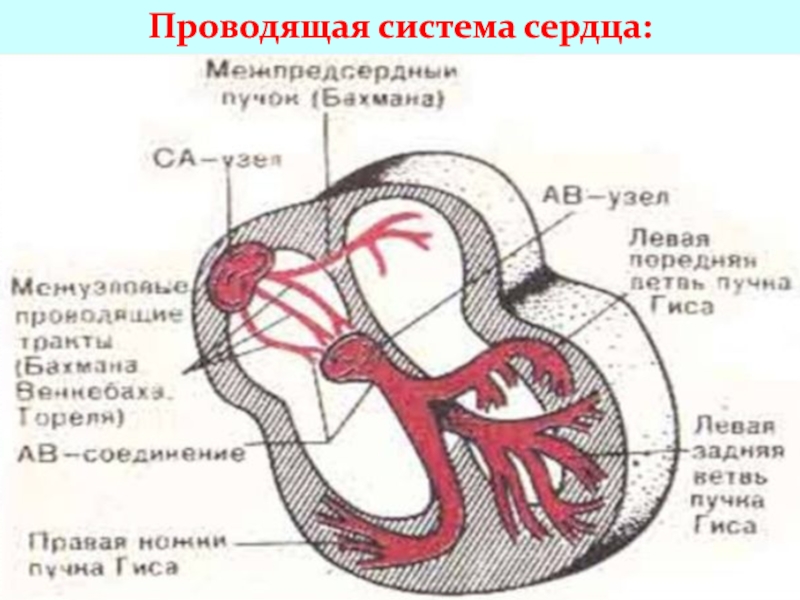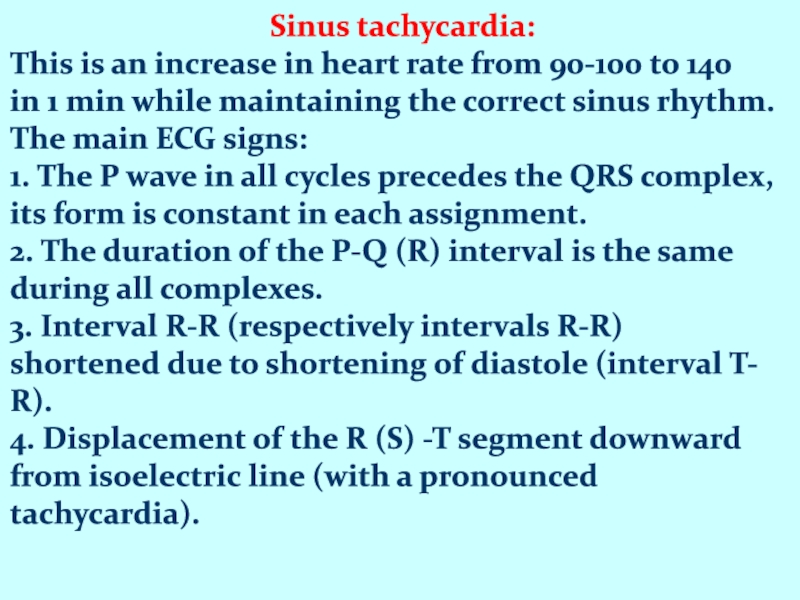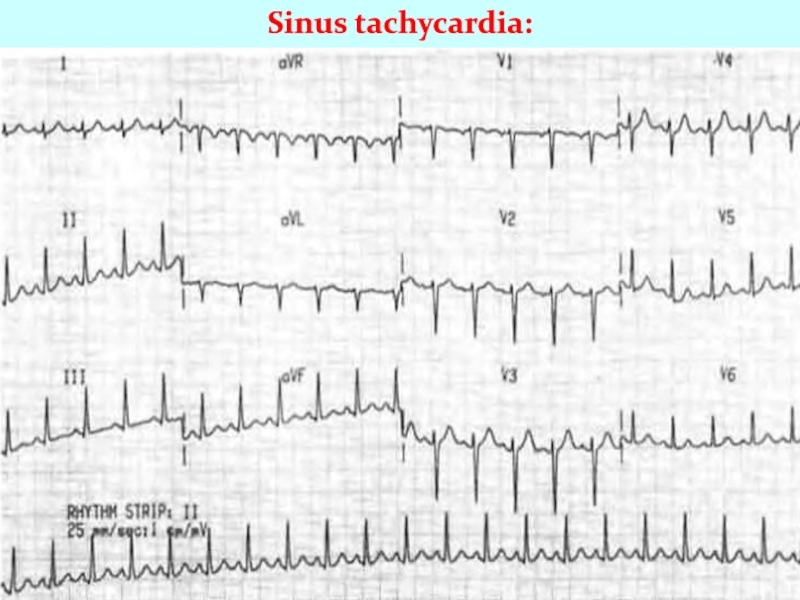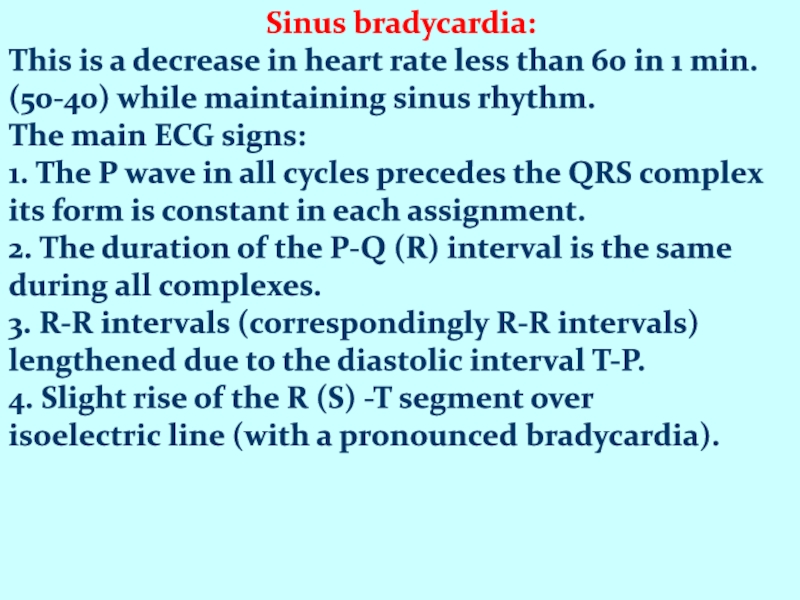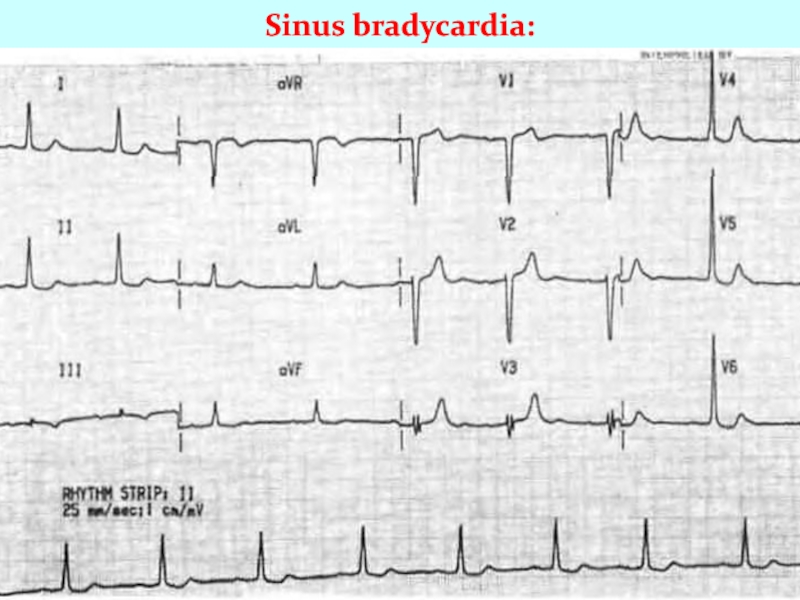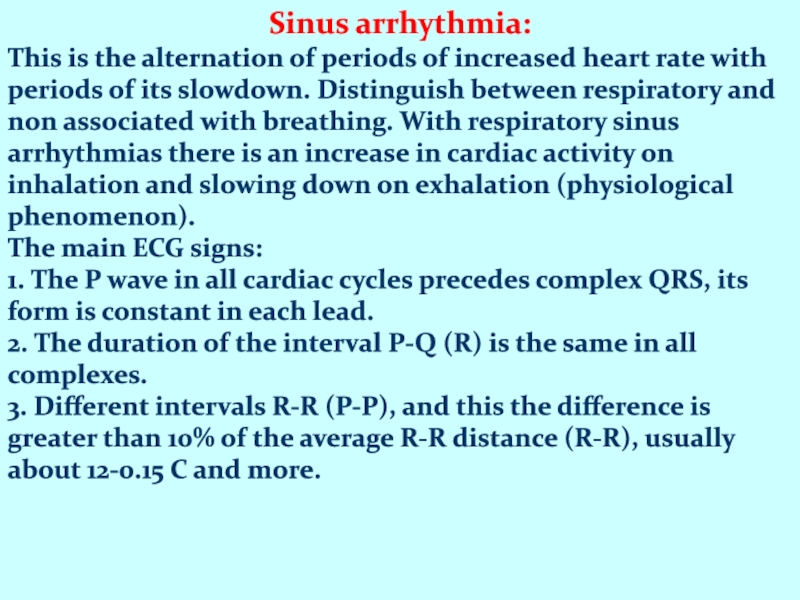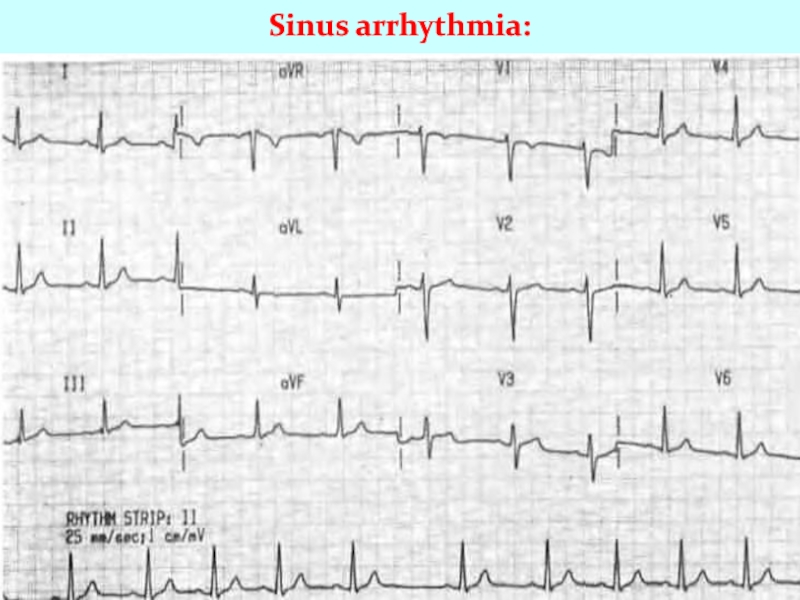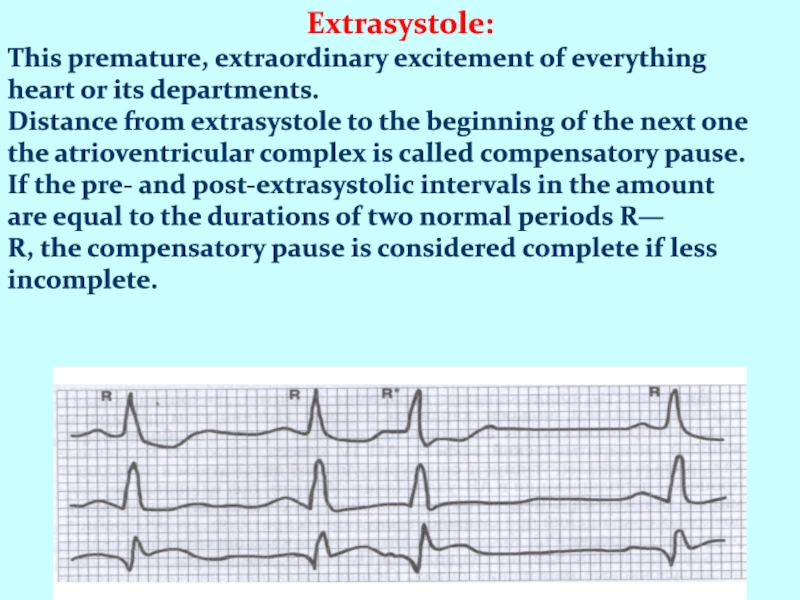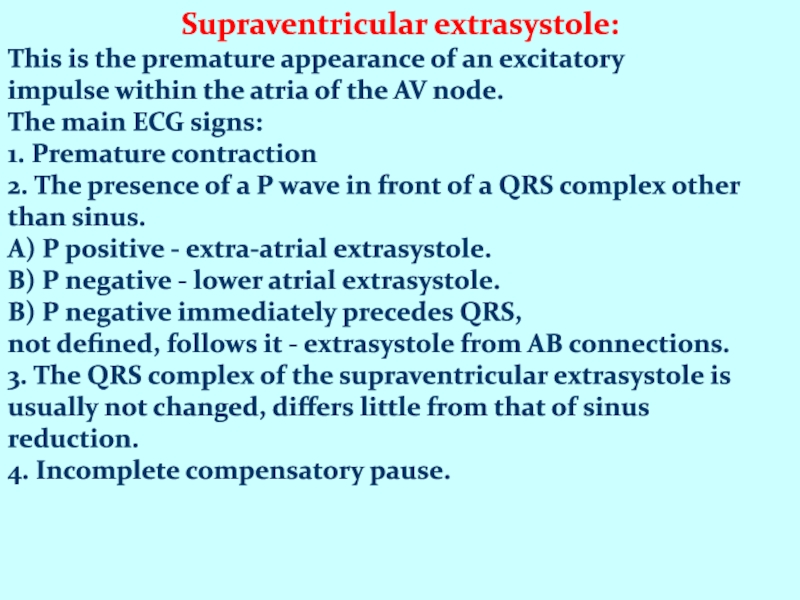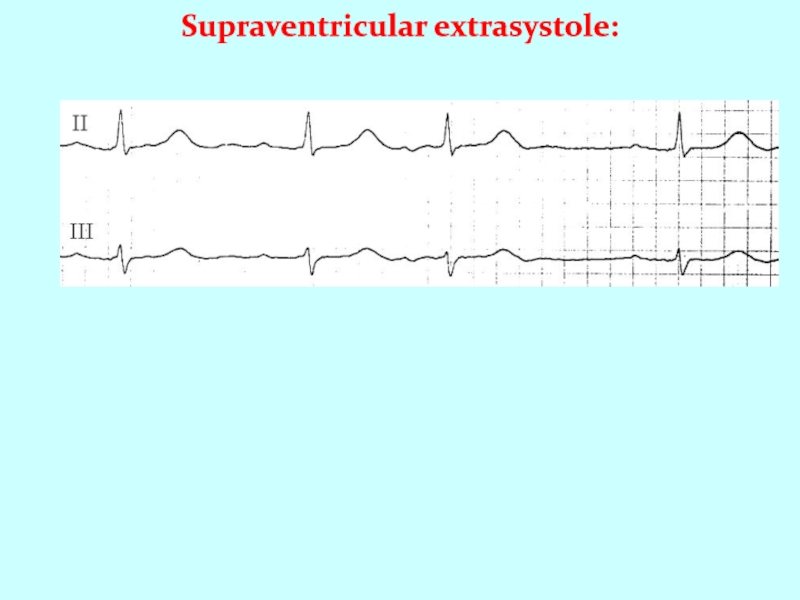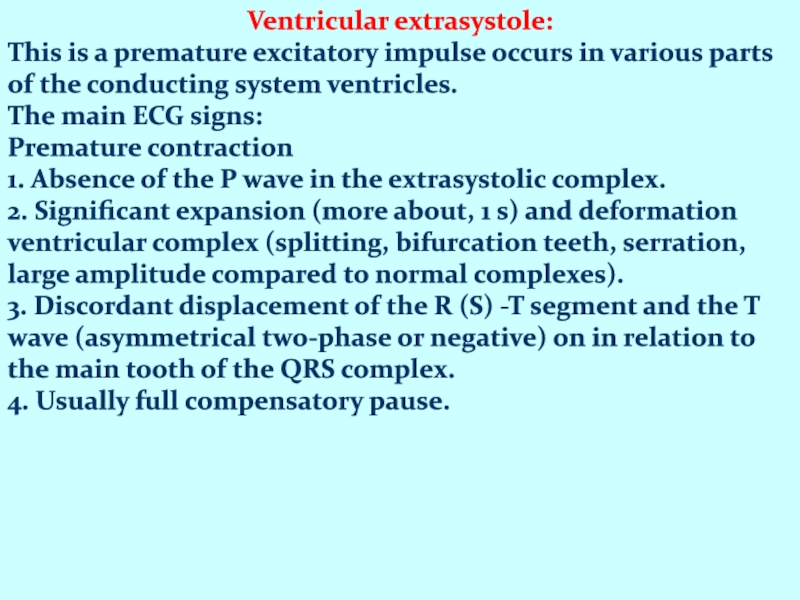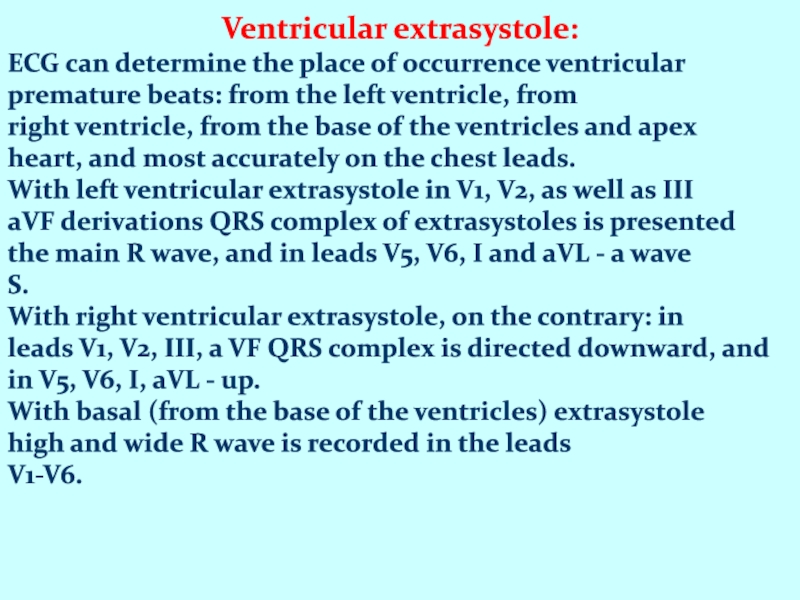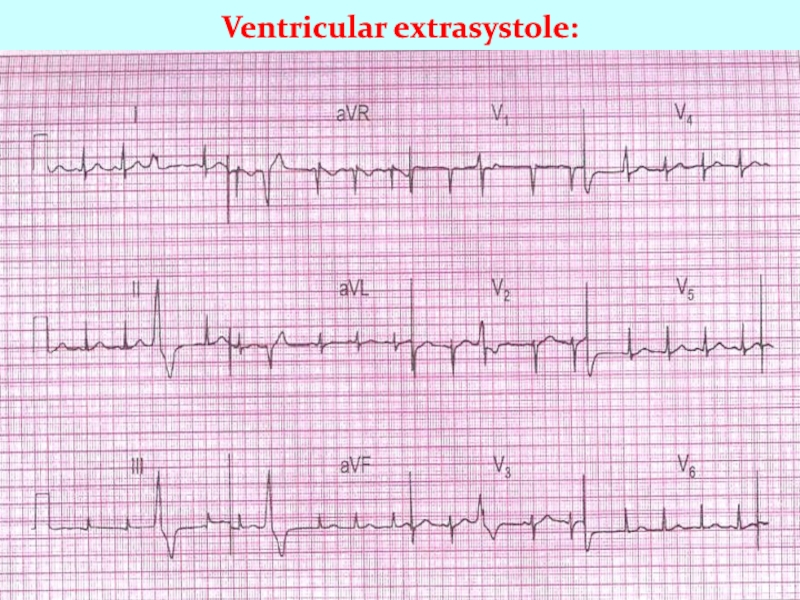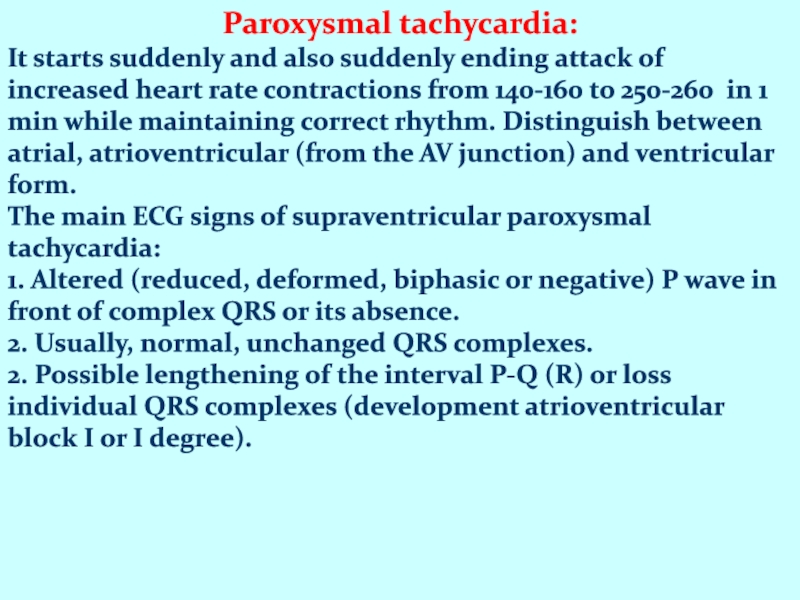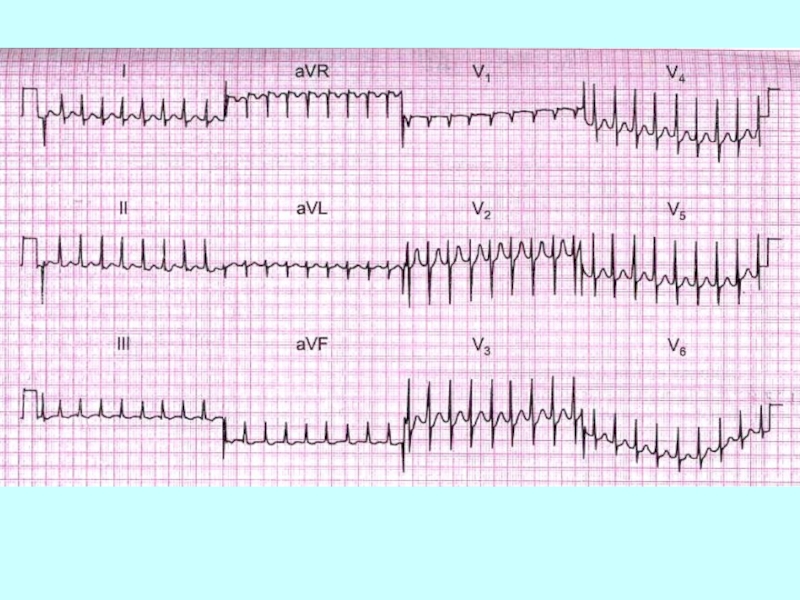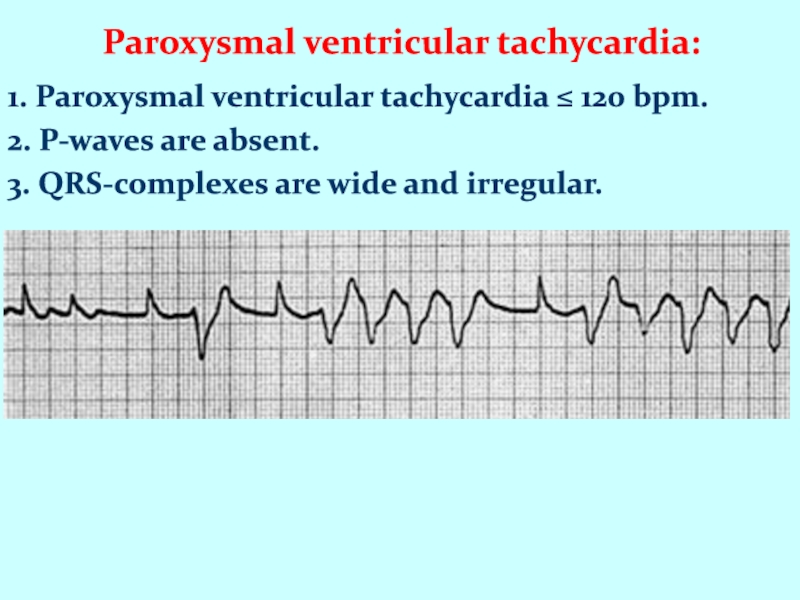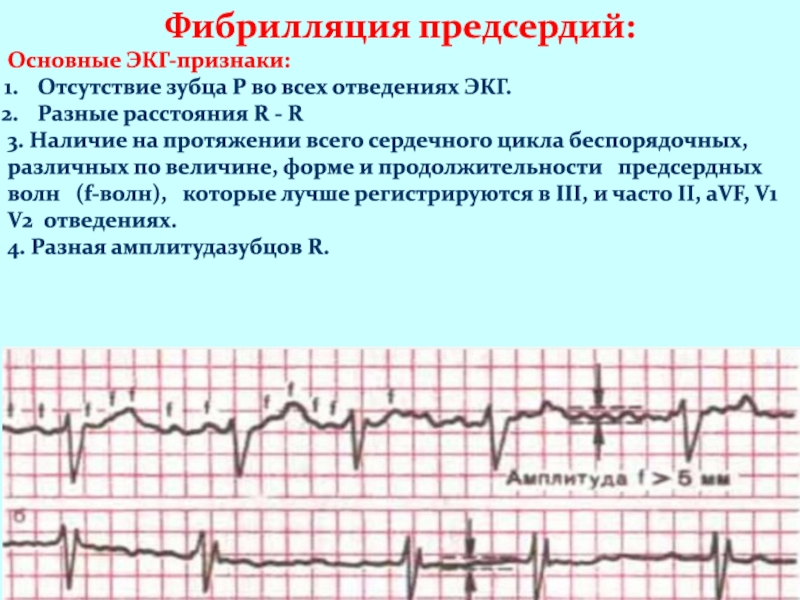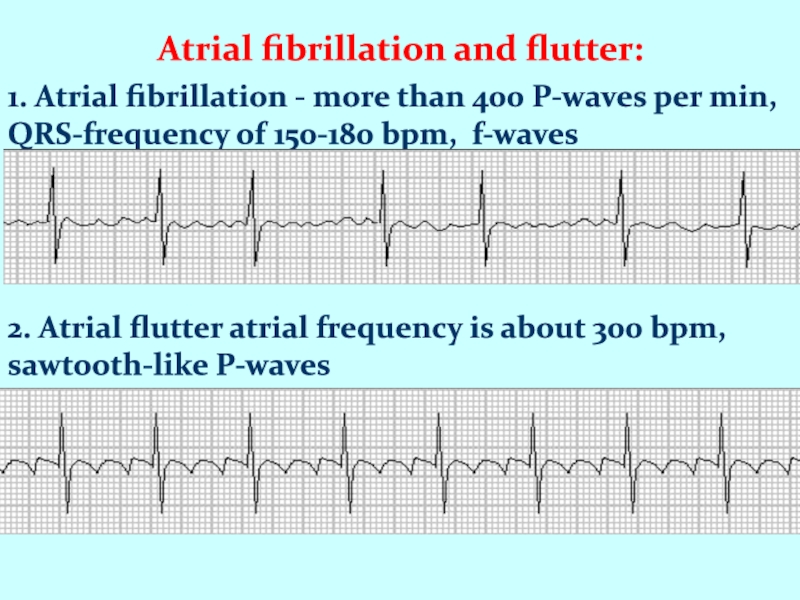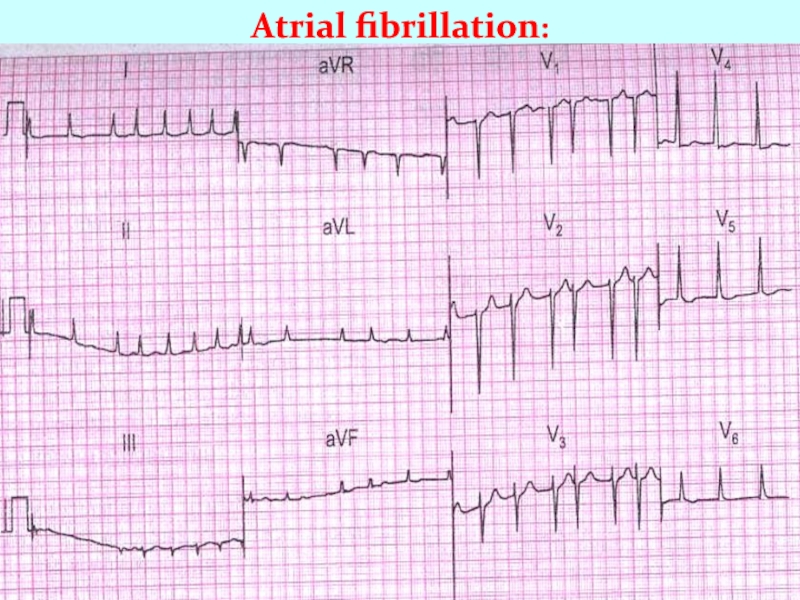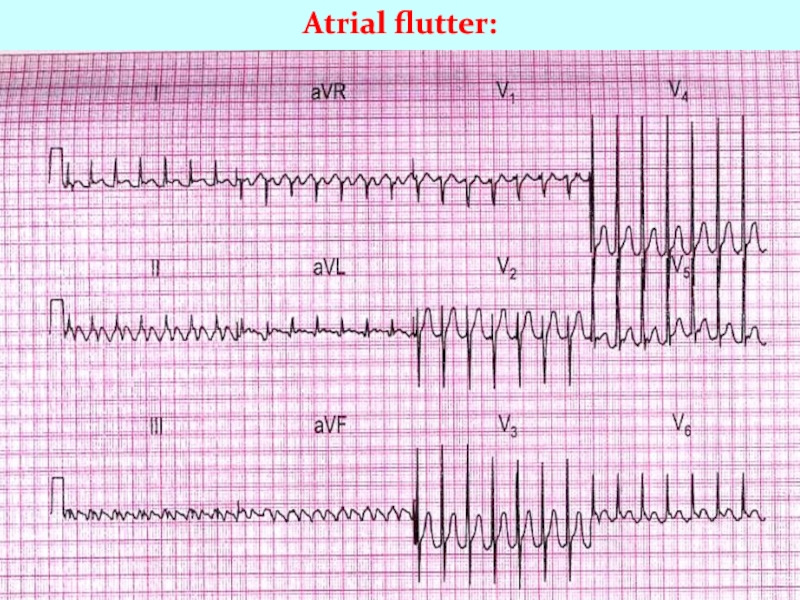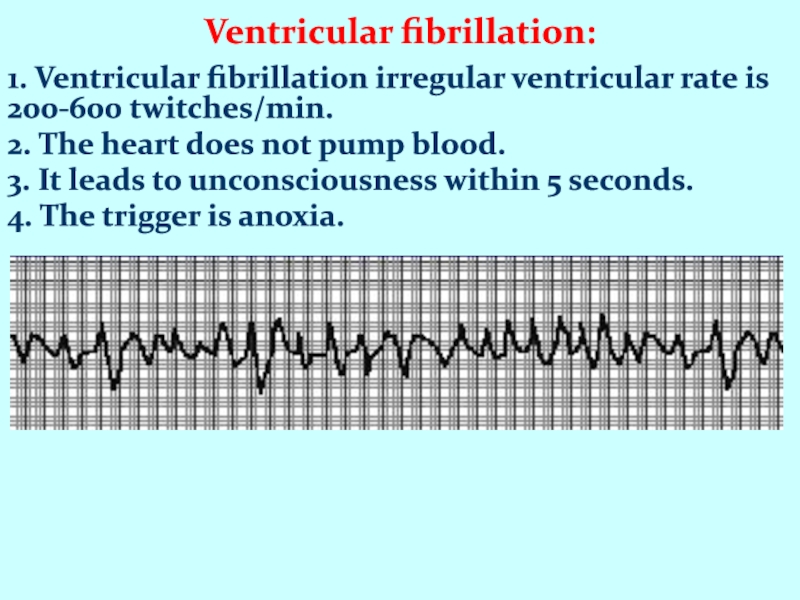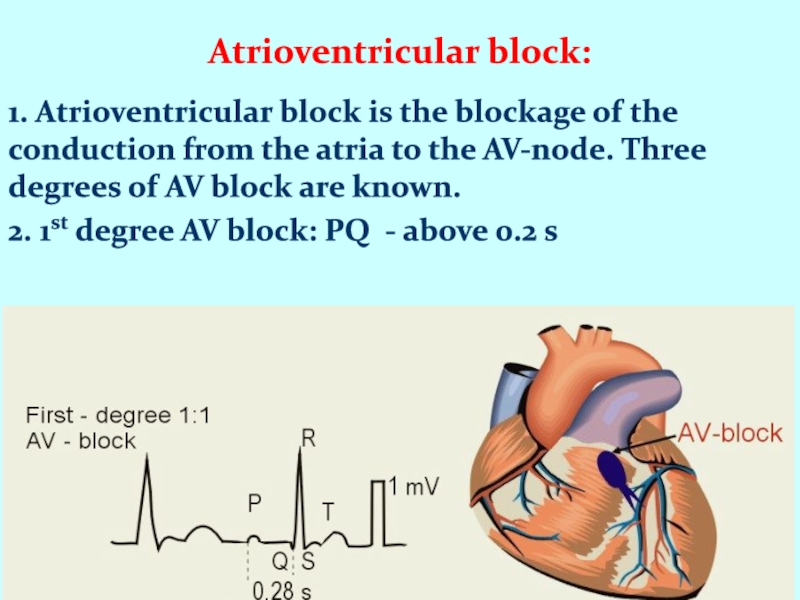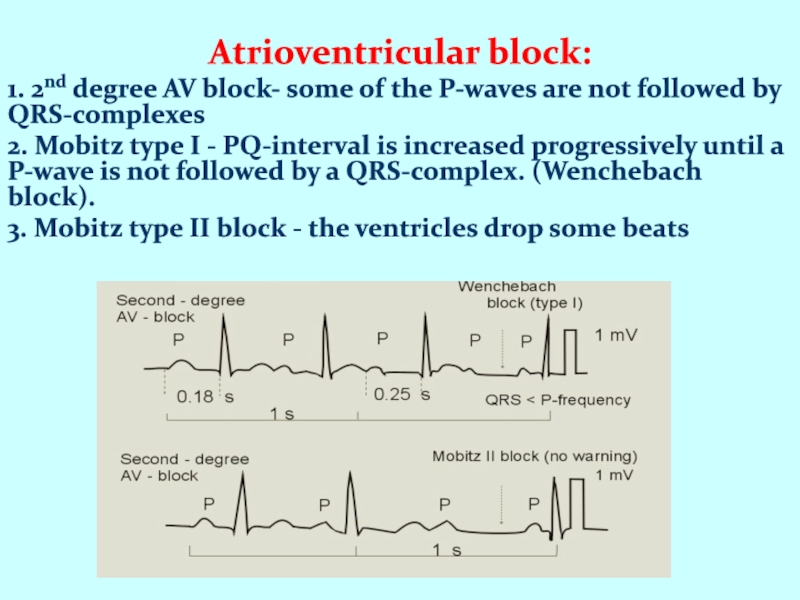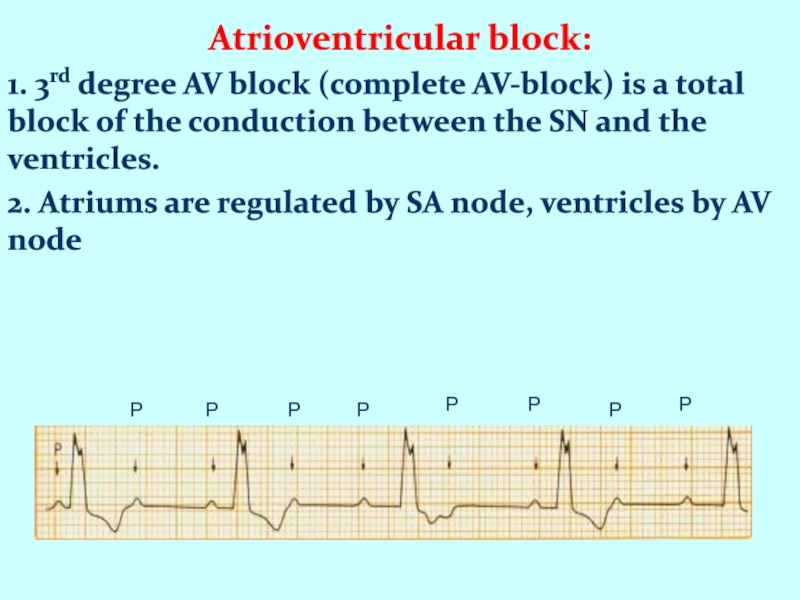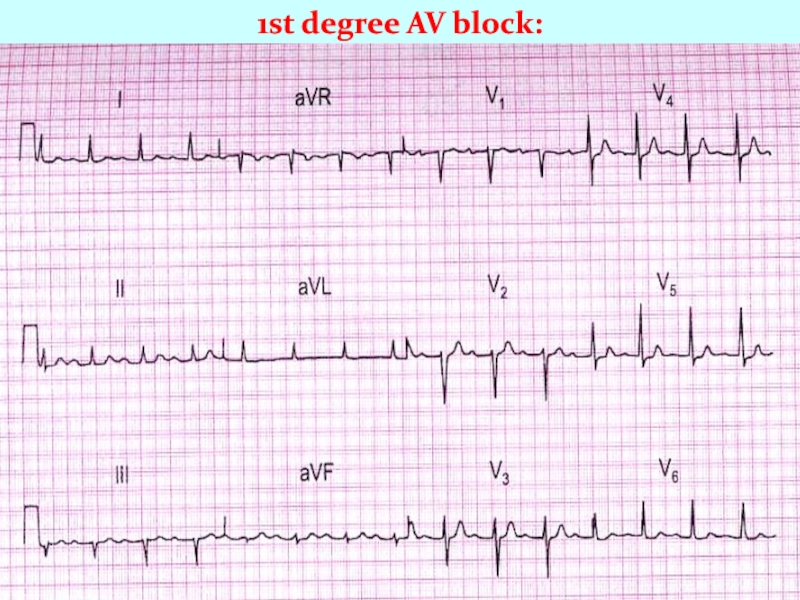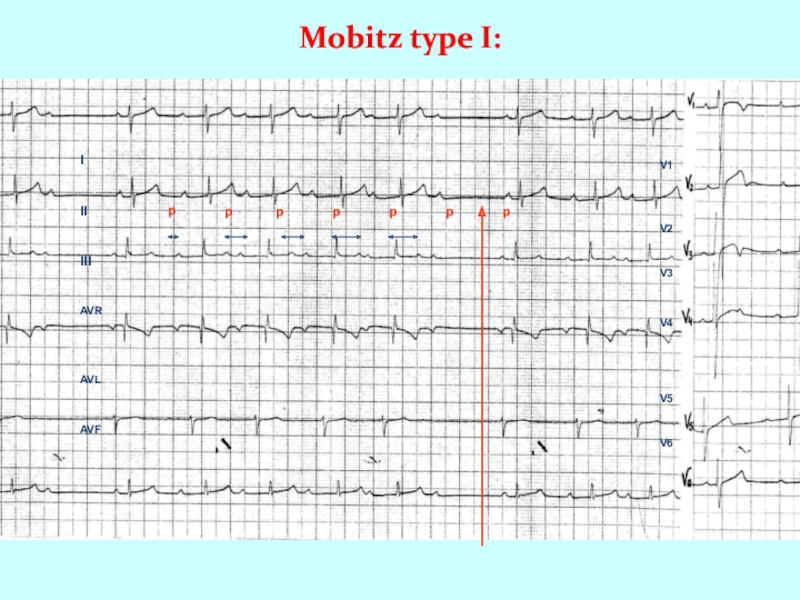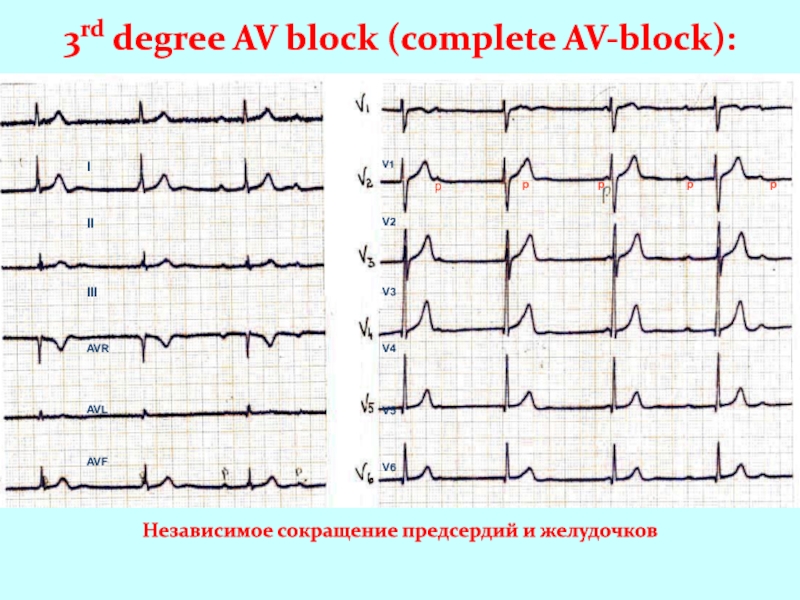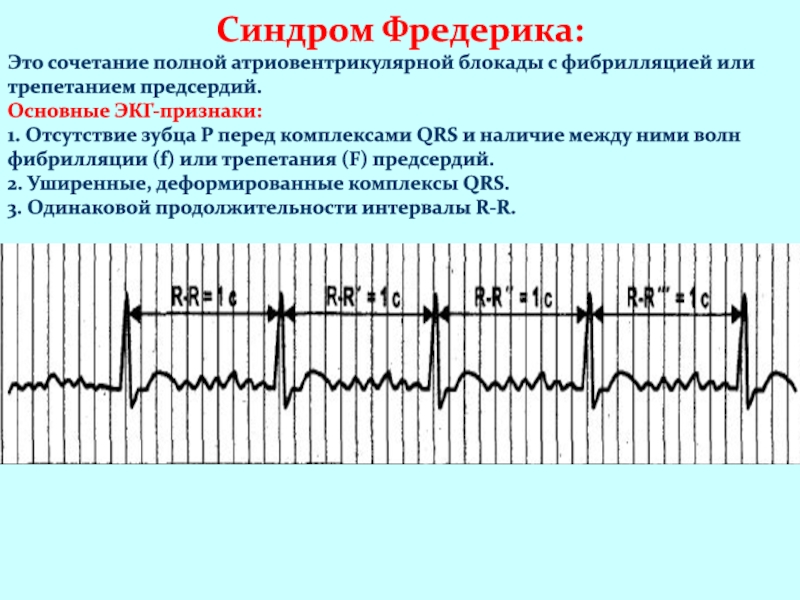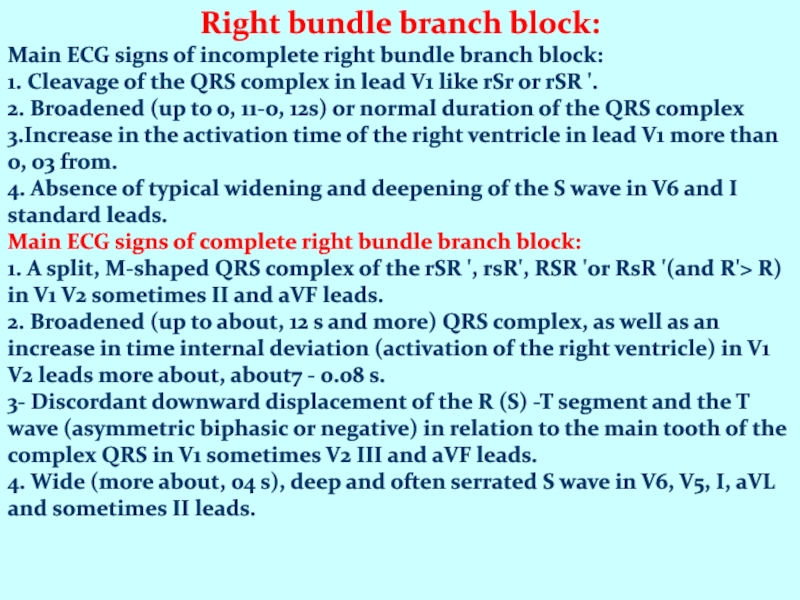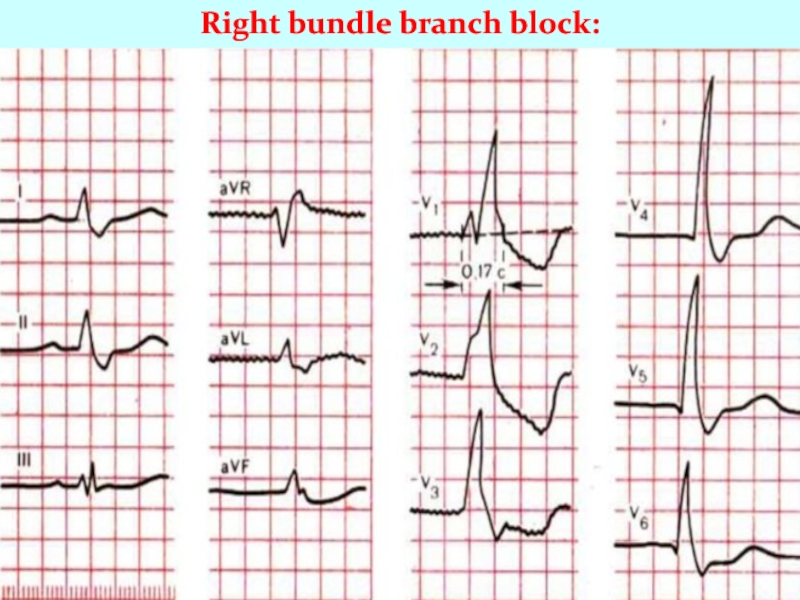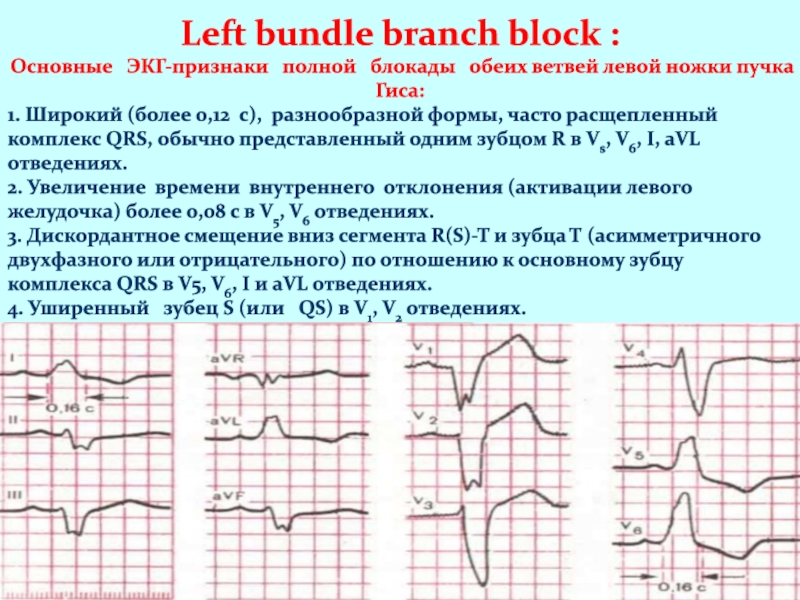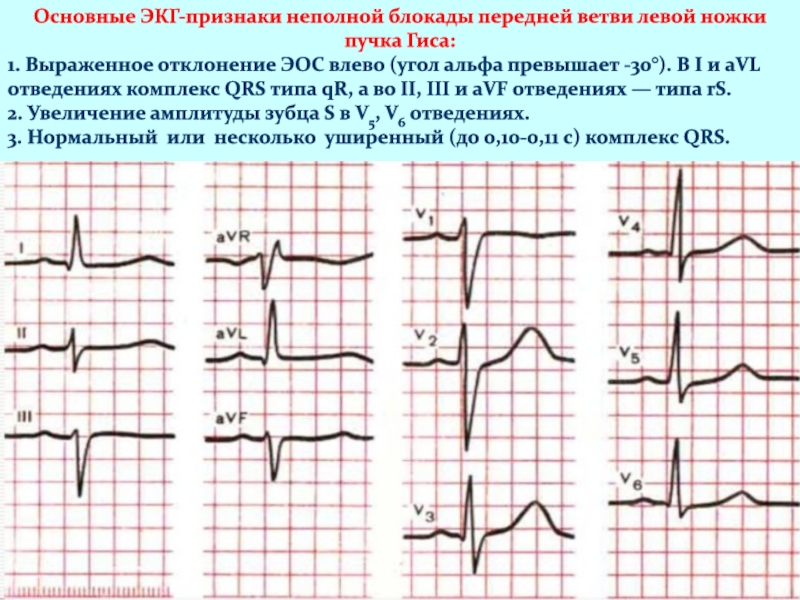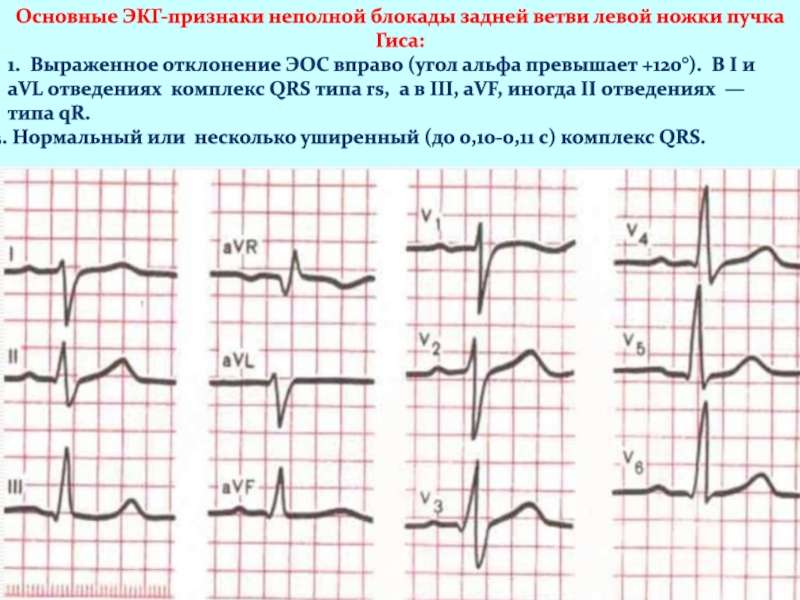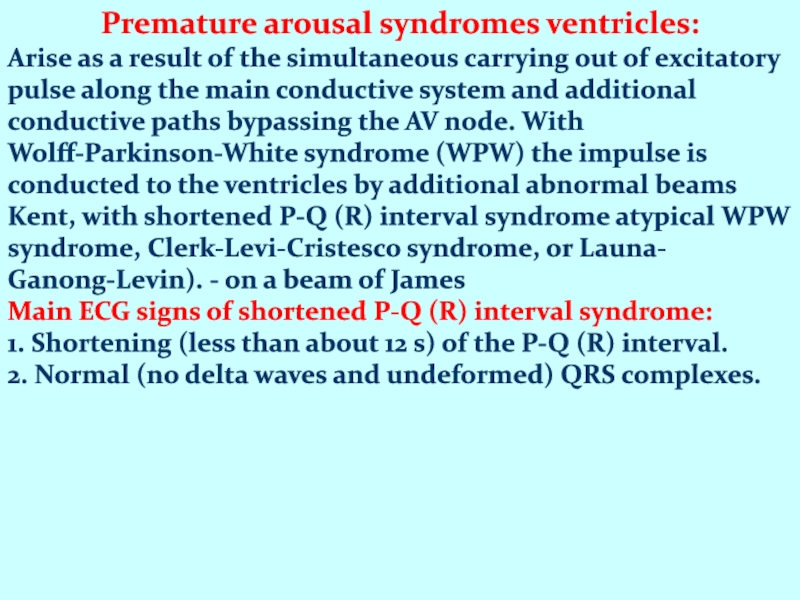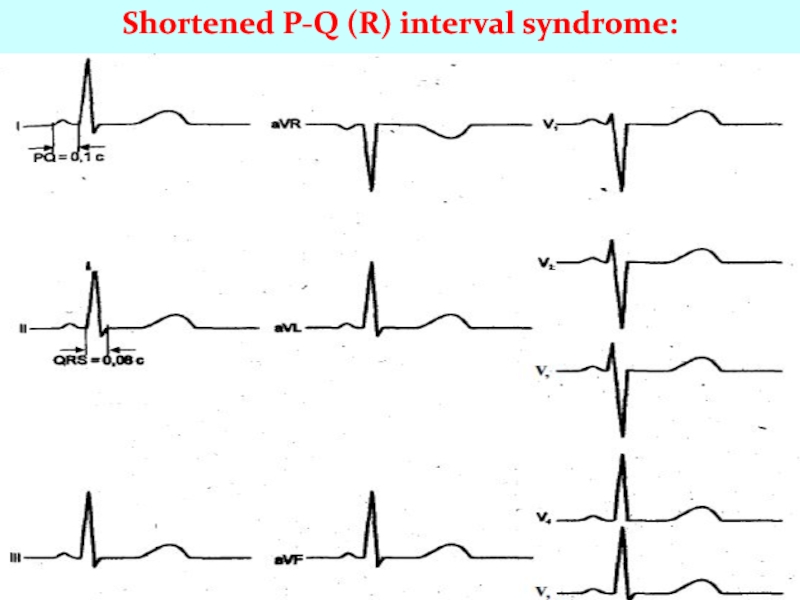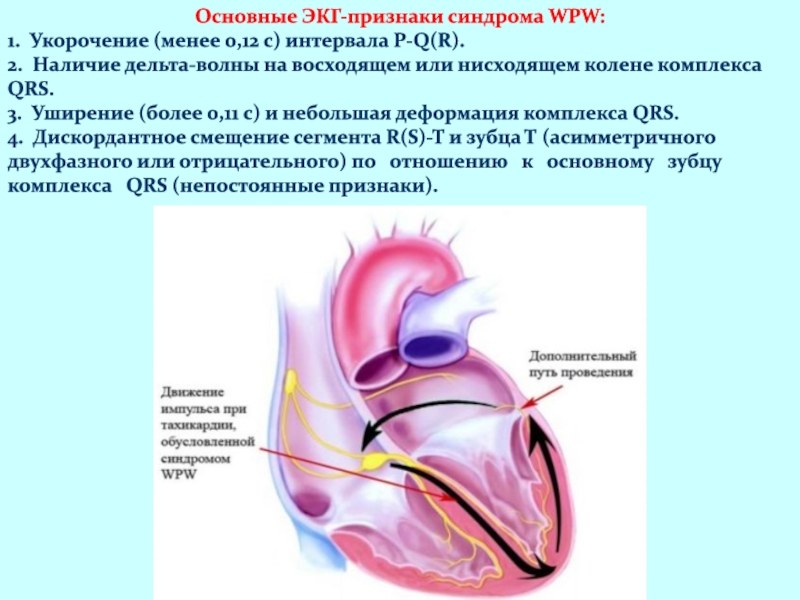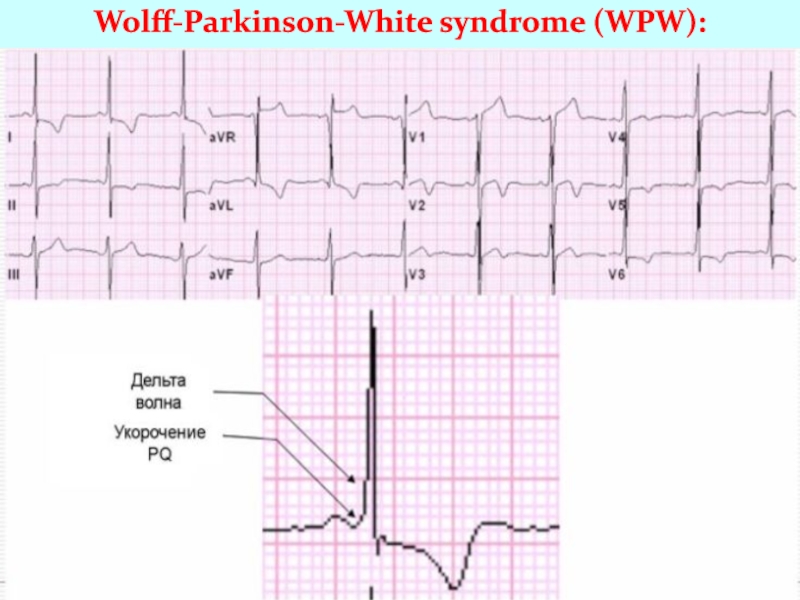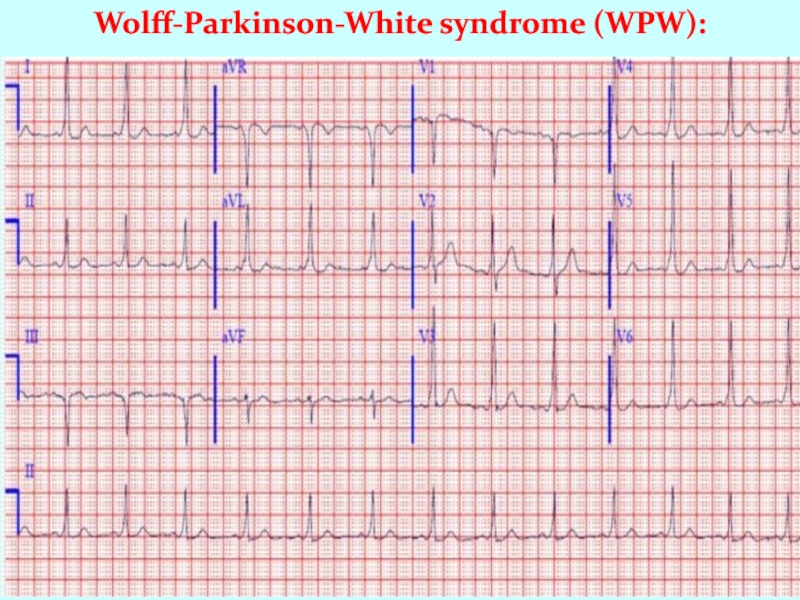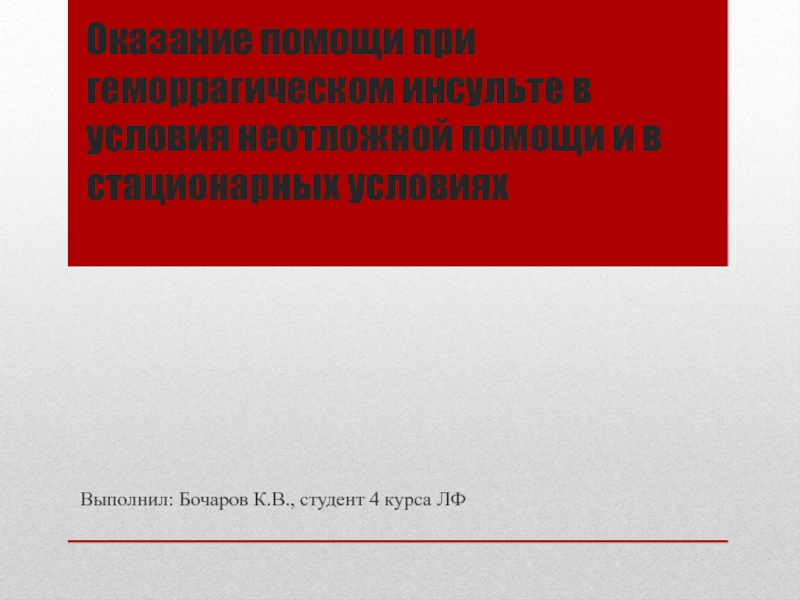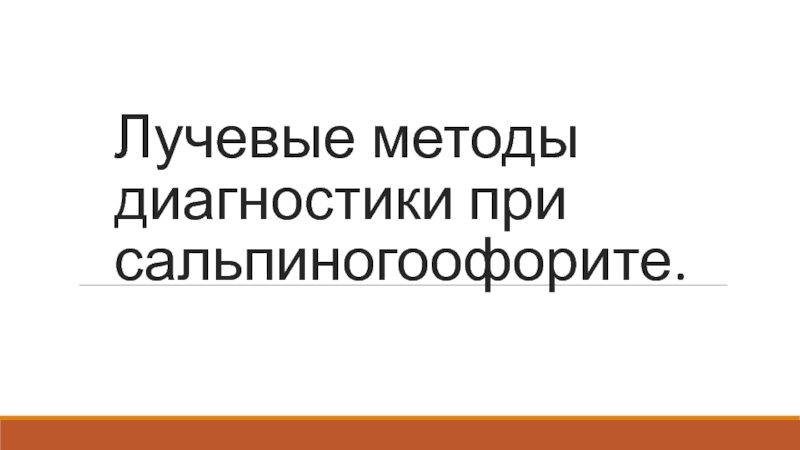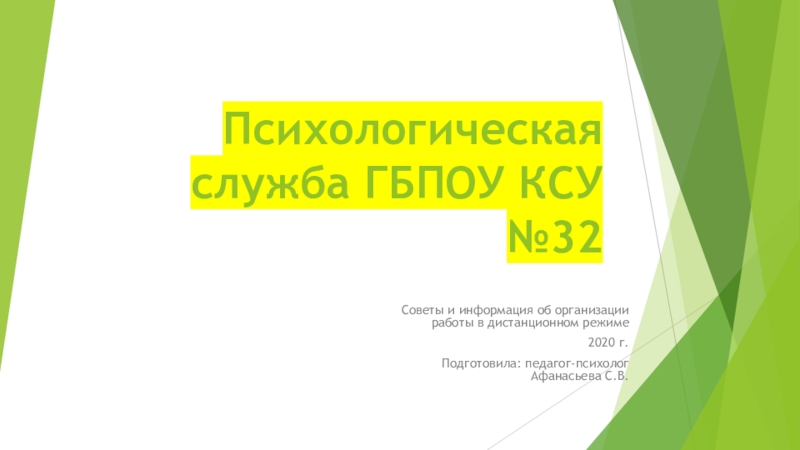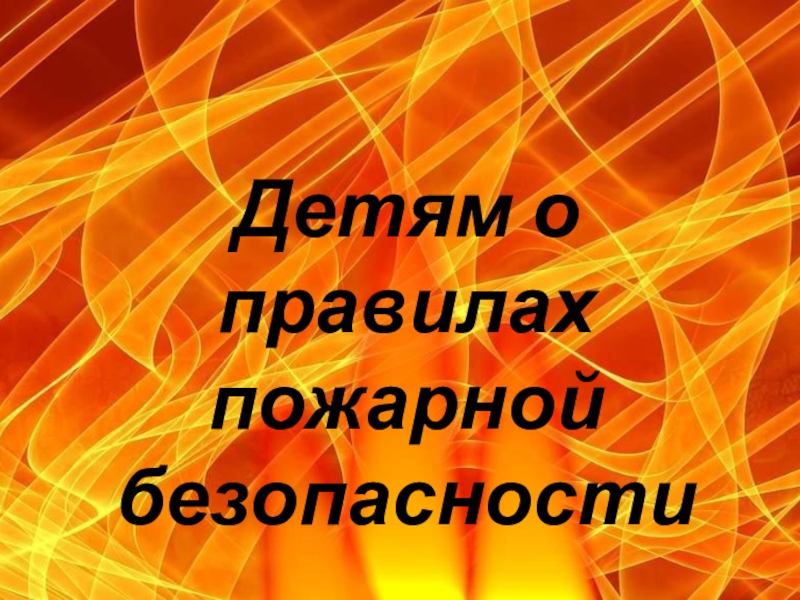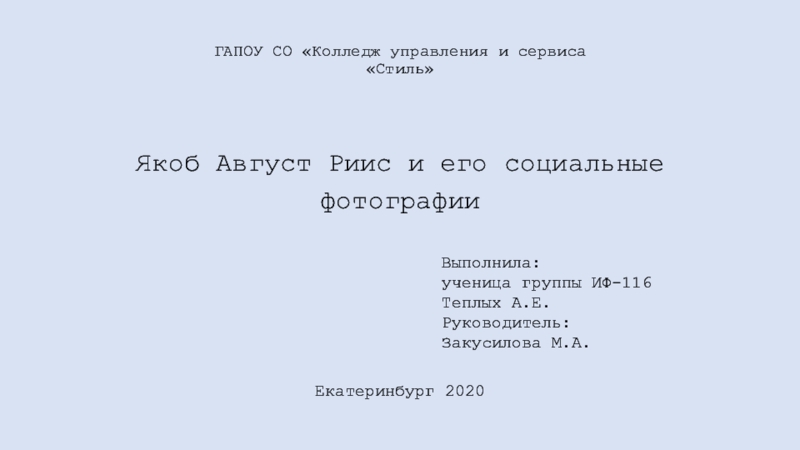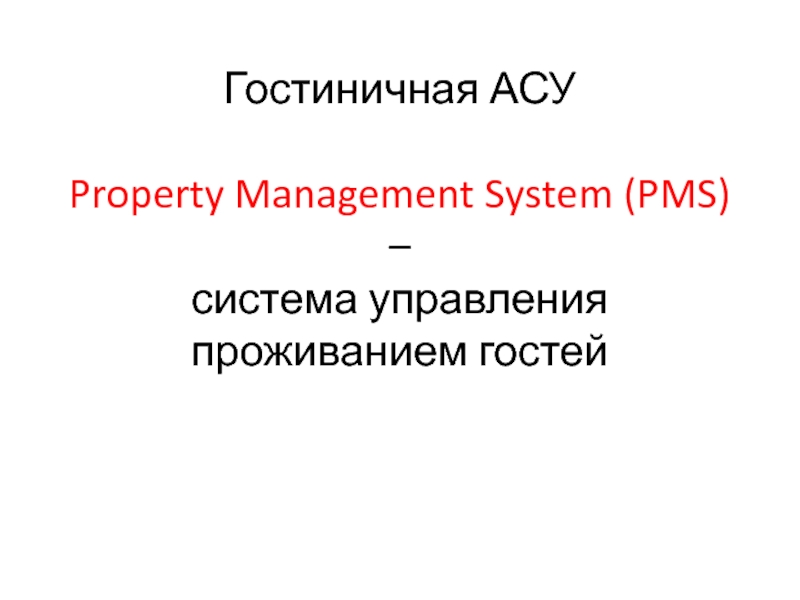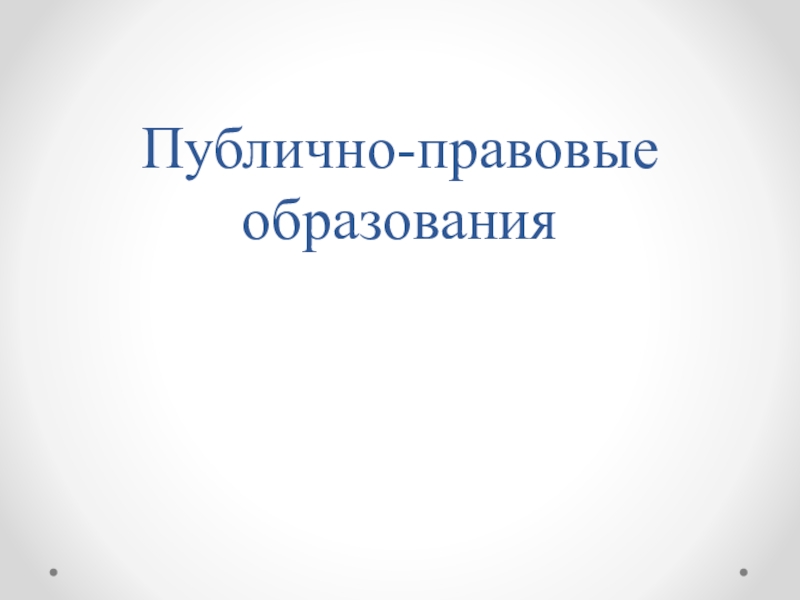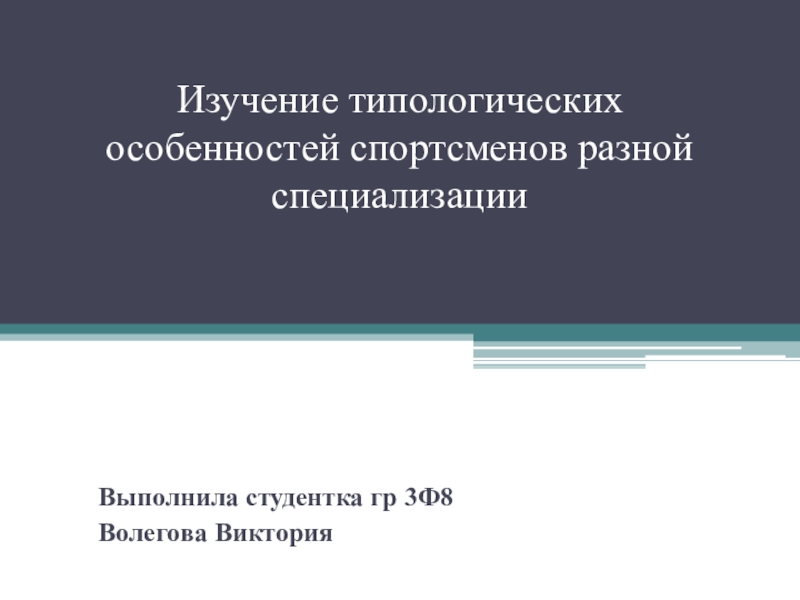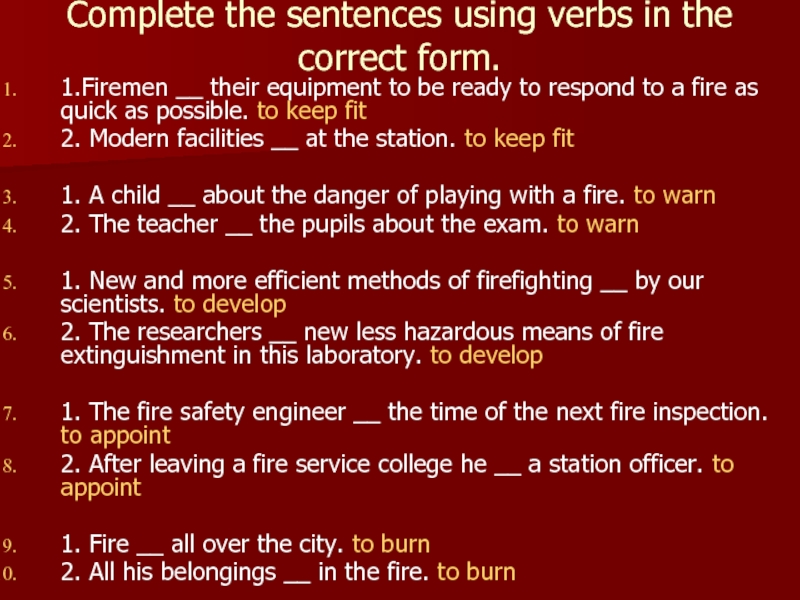Разделы презентаций
- Разное
- Английский язык
- Астрономия
- Алгебра
- Биология
- География
- Геометрия
- Детские презентации
- Информатика
- История
- Литература
- Математика
- Медицина
- Менеджмент
- Музыка
- МХК
- Немецкий язык
- ОБЖ
- Обществознание
- Окружающий мир
- Педагогика
- Русский язык
- Технология
- Физика
- Философия
- Химия
- Шаблоны, картинки для презентаций
- Экология
- Экономика
- Юриспруденция
ЭКГ при нарушениях ритма и проводимости
Содержание
- 1. ЭКГ при нарушениях ритма и проводимости
- 2. Проводящая система сердца:
- 3. Sinus tachycardia:This is an increase in heart
- 4. Sinus tachycardia:
- 5. Sinus bradycardia:This is a decrease in heart
- 6. Sinus bradycardia:
- 7. Sinus arrhythmia:This is the alternation of periods
- 8. Sinus arrhythmia:
- 9. Extrasystole:This premature, extraordinary excitement of everythingheart or
- 10. Supraventricular extrasystole:This is the premature appearance of
- 11. Supraventricular extrasystole:
- 12. Ventricular extrasystole:This is a premature excitatory impulse
- 13. Ventricular extrasystole:ECG can determine the place of
- 14. Ventricular extrasystole:
- 15. Paroxysmal tachycardia:It starts suddenly and also suddenly
- 16. Слайд 16
- 17. Paroxysmal ventricular tachycardia:1. Paroxysmal ventricular tachycardia ≤
- 18. Фибрилляция предсердий:Основные ЭКГ-признаки:Отсутствие зубца Р во всех
- 19. Atrial fibrillation and flutter:1. Atrial fibrillation -
- 20. Atrial fibrillation:
- 21. Atrial flutter:
- 22. Ventricular fibrillation:1. Ventricular fibrillation irregular ventricular rate
- 23. Atrioventricular block:1. Atrioventricular block is the blockage
- 24. Atrioventricular block:1. 2nd degree AV block- some
- 25. Atrioventricular block:1. 3rd degree AV block (complete
- 26. 1st degree AV block:
- 27. Mobitz type I:IIIIIIAVRAVLAVFV1V2V3V4V5V6ppppppp
- 28. 3rd degree AV block (complete AV-block):IIIIIIAVRAVLAVFV1V2V3V4V5V6ppppНезависимое сокращение предсердий и желудочков p
- 29. Синдром Фредерика: Это сочетание полной атриовентрикулярной блокады
- 30. Right bundle branch block:Main ECG signs of
- 31. Right bundle branch block:
- 32. Left bundle branch block :Основные ЭКГ-признаки
- 33. Основные ЭКГ-признаки неполной блокады передней ветви левой
- 34. Основные ЭКГ-признаки неполной блокады задней ветви левой
- 35. Premature arousal syndromes ventricles:Arise as a result
- 36. Shortened P-Q (R) interval syndrome:
- 37. Основные ЭКГ-признаки синдрома WPW:1. Укорочение (менее 0,12
- 38. Wolff-Parkinson-White syndrome (WPW):
- 39. Wolff-Parkinson-White syndrome (WPW):
- 40. Благодарю за внимание!
- 41. Скачать презентанцию
Проводящая система сердца:
Слайды и текст этой презентации
Слайд 1ЭКГ при нарушениях ритма и проводимости
Кафедра пропедевтики внутренних болезней
ФГОУ ВО
КубГМУ МЗ России
Слайд 3Sinus tachycardia:
This is an increase in heart rate from 90-100
to 140
in 1 min while maintaining the correct sinus rhythm.
The
main ECG signs:1. The P wave in all cycles precedes the QRS complex,
its form is constant in each assignment.
2. The duration of the P-Q (R) interval is the same during all complexes.
3. Interval R-R (respectively intervals R-R)
shortened due to shortening of diastole (interval T-
R).
4. Displacement of the R (S) -T segment downward from isoelectric line (with a pronounced tachycardia).
Слайд 5Sinus bradycardia:
This is a decrease in heart rate less than
60 in 1 min.
(50-40) while maintaining sinus rhythm.
The main ECG
signs:1. The P wave in all cycles precedes the QRS complex
its form is constant in each assignment.
2. The duration of the P-Q (R) interval is the same during all complexes.
3. R-R intervals (correspondingly R-R intervals)
lengthened due to the diastolic interval T-P.
4. Slight rise of the R (S) -T segment over
isoelectric line (with a pronounced bradycardia).
Слайд 7Sinus arrhythmia:
This is the alternation of periods of increased heart
rate with
periods of its slowdown. Distinguish between respiratory and non
associated with breathing. With respiratory sinusarrhythmias there is an increase in cardiac activity on
inhalation and slowing down on exhalation (physiological phenomenon).
The main ECG signs:
1. The P wave in all cardiac cycles precedes complex QRS, its form is constant in each lead.
2. The duration of the interval P-Q (R) is the same in all complexes.
3. Different intervals R-R (P-P), and this the difference is greater than 10% of the average R-R distance (R-R), usually about 12-0.15 C and more.
Слайд 9Extrasystole:
This premature, extraordinary excitement of everything
heart or its departments.
Distance from
extrasystole to the beginning of the next one
the atrioventricular complex
is called compensatory pause.If the pre- and post-extrasystolic intervals in the amount
are equal to the durations of two normal periods R—
R, the compensatory pause is considered complete if less
incomplete.
Слайд 10Supraventricular extrasystole:
This is the premature appearance of an excitatory
impulse within
the atria of the AV node.
The main ECG signs:
1. Premature
contraction2. The presence of a P wave in front of a QRS complex other than sinus.
A) P positive - extra-atrial extrasystole.
B) P negative - lower atrial extrasystole.
B) P negative immediately precedes QRS,
not defined, follows it - extrasystole from AB connections.
3. The QRS complex of the supraventricular extrasystole is usually not changed, differs little from that of sinus
reduction.
4. Incomplete compensatory pause.
Слайд 12Ventricular extrasystole:
This is a premature excitatory impulse occurs in various
parts of the conducting system ventricles.
The main ECG signs:
Premature contraction
1.
Absence of the P wave in the extrasystolic complex.2. Significant expansion (more about, 1 s) and deformation
ventricular complex (splitting, bifurcation teeth, serration, large amplitude compared to normal complexes).
3. Discordant displacement of the R (S) -T segment and the T wave (asymmetrical two-phase or negative) on in relation to the main tooth of the QRS complex.
4. Usually full compensatory pausе.
Слайд 13Ventricular extrasystole:
ECG can determine the place of occurrence ventricular premature
beats: from the left ventricle, from
right ventricle, from the base
of the ventricles and apexheart, and most accurately on the chest leads.
With left ventricular extrasystole in V1, V2, as well as III
aVF derivations QRS complex of extrasystoles is presented
the main R wave, and in leads V5, V6, I and aVL - a wave
S.
With right ventricular extrasystole, on the contrary: in
leads V1, V2, III, a VF QRS complex is directed downward, and
in V5, V6, I, aVL - up.
With basal (from the base of the ventricles) extrasystole
high and wide R wave is recorded in the leads
V1-V6.
Слайд 15Paroxysmal tachycardia:
It starts suddenly and also suddenly ending attack of
increased heart rate contractions from 140-160 to 250-260 in 1
min while maintaining correct rhythm. Distinguish between atrial, atrioventricular (from the AV junction) and ventricular form.The main ECG signs of supraventricular paroxysmal tachycardia:
1. Altered (reduced, deformed, biphasic or negative) P wave in front of complex QRS or its absence.
2. Usually, normal, unchanged QRS complexes.
2. Possible lengthening of the interval P-Q (R) or loss
individual QRS complexes (development atrioventricular block I or I degree).
Слайд 17Paroxysmal ventricular tachycardia:
1. Paroxysmal ventricular tachycardia ≤ 120 bpm.
2. P-waves
are absent.
3. QRS-complexes are wide and irregular.
Слайд 18Фибрилляция предсердий:
Основные ЭКГ-признаки:
Отсутствие зубца Р во всех отведениях ЭКГ.
Разные расстояния
R - R
3. Наличие на протяжении всего сердечного цикла беспорядочных,
различных по величине, форме и продолжительности предсердных волн (f-волн), которые лучше регистрируются в III, и часто II, aVF, V1 V2 отведениях.4. Разная амплитудазубцов R.
Слайд 19Atrial fibrillation and flutter:
1. Atrial fibrillation - more than 400
P-waves per min, QRS-frequency of 150-180 bpm, f-waves
2. Atrial
flutter atrial frequency is about 300 bpm, sawtooth-like P-waves Слайд 22Ventricular fibrillation:
1. Ventricular fibrillation irregular ventricular rate is 200-600 twitches/min.
2. The heart does not pump blood.
3. It leads
to unconsciousness within 5 seconds.4. The trigger is anoxia.
Слайд 23Atrioventricular block:
1. Atrioventricular block is the blockage of the conduction
from the atria to the AV-node. Three degrees of AV
block are known.2. 1st degree AV block: PQ - above 0.2 s
Слайд 24Atrioventricular block:
1. 2nd degree AV block- some of the P-waves
are not followed by QRS-complexes
2. Mobitz type I -
PQ-interval is increased progressively until a P-wave is not followed by a QRS-complex. (Wenchebach block). 3. Mobitz type II block - the ventricles drop some beats
Слайд 25Atrioventricular block:
1. 3rd degree AV block (complete AV-block) is a
total block of the conduction between the SN and the
ventricles.2. Atriums are regulated by SA node, ventricles by AV node
P
P
P
P
P
P
P
P
Слайд 283rd degree AV block (complete AV-block):
I
II
III
AVR
AVL
AVF
V1
V2
V3
V4
V5
V6
p
p
p
p
Независимое сокращение предсердий и желудочков
p
Слайд 29Синдром Фредерика:
Это сочетание полной атриовентрикулярной блокады с фибрилляцией или
трепетанием предсердий.
Основные ЭКГ-признаки:
1. Отсутствие зубца Р перед комплексами QRS и
наличие между ними волн фибрилляции (f) или трепетания (F) предсердий.2. Уширенные, деформированные комплексы QRS.
3. Одинаковой продолжительности интервалы R-R.
Слайд 30Right bundle branch block:
Main ECG signs of incomplete right bundle
branch block:
1. Cleavage of the QRS complex in lead V1
like rSr or rSR '.2. Broadened (up to o, 11-o, 12s) or normal duration of the QRS complex
3.Increase in the activation time of the right ventricle in lead V1 more than o, o3 from.
4. Absence of typical widening and deepening of the S wave in V6 and I standard leads.
Main ECG signs of complete right bundle branch block:
1. A split, M-shaped QRS complex of the rSR ', rsR', RSR 'or RsR '(and R'> R) in V1 V2 sometimes II and aVF leads.
2. Broadened (up to about, 12 s and more) QRS complex, as well as an increase in time internal deviation (activation of the right ventricle) in V1 V2 leads more about, about7 - 0.08 s.
3- Discordant downward displacement of the R (S) -T segment and the T wave (asymmetric biphasic or negative) in relation to the main tooth of the complex QRS in V1 sometimes V2 III and aVF leads.
4. Wide (more about, 04 s), deep and often serrated S wave in V6, V5, I, aVL
and sometimes II leads.
Слайд 32Left bundle branch block :
Основные ЭКГ-признаки полной
блокады обеих ветвей левой ножки пучка Гиса:
1. Широкий (более
0,12 с), разнообразной формы, часто расщепленный комплекс QRS, обычно представленный одним зубцом R в Vs, V6, I, aVL отведениях.2. Увеличение времени внутреннего отклонения (активации левого желудочка) более 0,08 с в V5, V6 отведениях.
3. Дискордантное смещение вниз сегмента R(S)-T и зубца Т (асимметричного двухфазного или отрицательного) по отношению к основному зубцу комплекса QRS в V5, V6, I и aVL отведениях.
4. Уширенный зубец S (или QS) в V1, V2 отведениях.
Слайд 33Основные ЭКГ-признаки неполной блокады передней ветви левой ножки пучка Гиса:
1.
Выраженное отклонение ЭОС влево (угол альфа превышает -30°). В I
и aVL отведениях комплекс QRS типа qR, а во II, III и aVF отведениях — типа rS.2. Увеличение амплитуды зубца S в V5, V6 отведениях.
3. Нормальный или несколько уширенный (до 0,10-0,11 с) комплекс QRS.
Слайд 34Основные ЭКГ-признаки неполной блокады задней ветви левой ножки пучка Гиса:
1.
Выраженное отклонение ЭОС вправо (угол альфа превышает +120°). В I
и aVL отведениях комплекс QRS типа rs, а в III, aVF, иногда II отведениях — типа qR.Нормальный или несколько уширенный (до 0,10-0,11 с) комплекс QRS.
Слайд 35Premature arousal syndromes ventricles:
Arise as a result of the simultaneous
carrying out of excitatory
pulse along the main conductive system and
additional conductive paths bypassing the AV node. With Wolff-Parkinson-White syndrome (WPW) the impulse is conducted to the ventricles by additional abnormal beams Kent, with shortened P-Q (R) interval syndrome atypical WPW syndrome, Clerk-Levi-Cristesco syndrome, or Launa-Ganong-Levin). - on a beam of James
Main ECG signs of shortened P-Q (R) interval syndrome:
1. Shortening (less than about 12 s) of the P-Q (R) interval.
2. Normal (no delta waves and undeformed) QRS complexes.
Слайд 37Основные ЭКГ-признаки синдрома WPW:
1. Укорочение (менее 0,12 с) интервала P-Q(R).
2.
Наличие дельта-волны на восходящем или нисходящем колене комплекса QRS.
3. Уширение
(более 0,11 с) и небольшая деформация комплекса QRS.4. Дискордантное смещение сегмента R(S)-T и зубца Т (асимметричного двухфазного или отрицательного) по отношению к основному зубцу комплекса QRS (непостоянные признаки).

